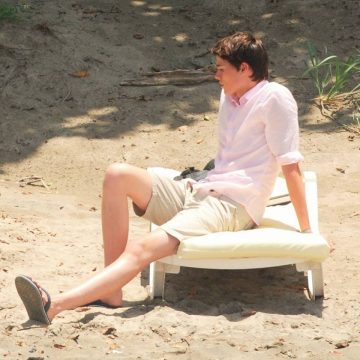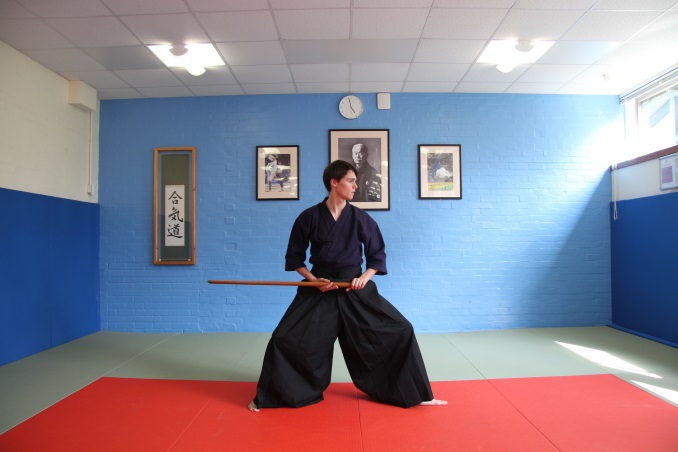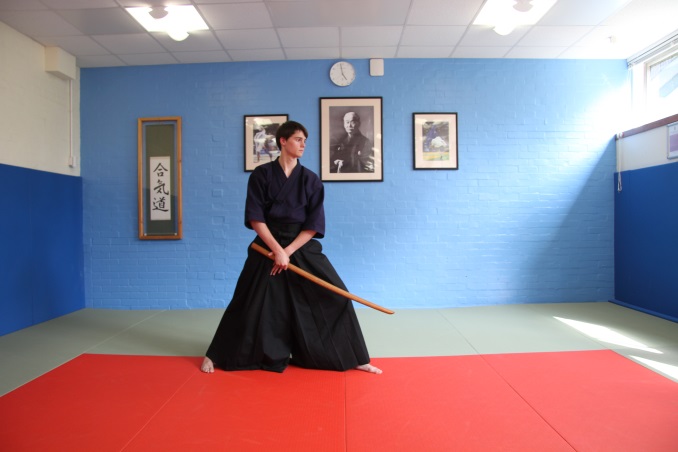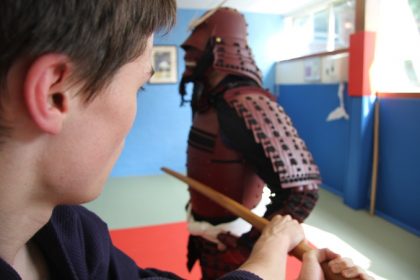Jack Sharp is a pre-university student who trains in several martial arts, including a centuries-old Japanese koryu. Socially-awkward as a child, martial arts training helped him to become confident. And it has become such a passion that he will be travelling to Australia next year to become a live-in student at a Yoshinkan Aikido dojo.
Find out how he copes with his routine and hear his advice about koryu martial arts at the end.
This is his story.
Jack Sharp’s Case Study Interview – Modern & Koryu Martial Arts


1. What do you train in and for how long? What’s your end goal?
I train in Aikido, Judo, Karate, and Tenshinshoden Katori Shinto ryu, as well as doing reality based self-defence style training run by the British Combat Association. I started doing karate When I was five, have been in love with the martial arts ever since, and have not stopped training for the past thirteen years!
I suppose I have a slightly Romantic image in my mind of setting up my own school with my good friends and training partners as an end result. Oh and a dojo on the bottom floor of my house, that would really be living the dream!
2. What happens during an average training session?
So by Training style.
Karate
The one thing that you would probably notice about one of our sessions is that we don’t practice kata. Our form is slightly unorthodox, and the vast majority of the training works around developing power in strikes by hitting things. A typical session would also contain at least 150 press-ups, arbitrarily “awarded” as punishments by sensei!
Judo
We don’t do anything particularly abnormal here, a standard mix of ne-waza and tachi-waza, technical instruction and randori. I also help out people struggling with particular techniques or concepts. The focus is more on the fitness and sport elements, though we have been known to delve into kata on occasion….
Aikido
I act mostly as an assistant instructor at my current club. We are a Tomiki aikido club, but one of the two head instructors is a Tomiki style 3rd Dan whilst the other is a Yoshinkan style 4th Dan, so we get a pretty wide range of teaching and experience. Standard training sessions include technical instruction as well as practice of technique in both kata and free play formats.
Katori Shinto ryu
Our sessions will always start with the practice of basics, maki-uchi, yoko-men and kamae drills. After that we move onto practicing kenjutsu forms and sometimes finish off with something a little different, iaijutsu, bo, naginiata and so on.
Self-Defence sessions
These are run by the British Combat Association, and the focus is on as much realism as possible. Sessions are short, only lasting and hour and a half, but intense, the aim being to push your body in the same way it might be pushed in a fight. In a session we will normally do striking drills, clinching, grappling and ground fighting. We also focus on posturing, verbalisation and de-escalation tactics to attempt to avoid conflict in the first place.
3. What stage in life are you at and what are your priorities? How do you regard training, when considering those?

I am currently 18 years old, and about to leave school. My next big project is finding a job in London to be able to fund a trip to Australia in January 2017 to live as an uchideshi studying Yoshinkan Aikido. I have been extremely lucky for the past 5 years of my life, as I have attended a school that has the facilities and coaching to allow me to train seven days a week in addition to my academic studies. Leaving school will be a step into the unknown, and in an ideal world I would be able to start a club of some sort at which my friends and I could continue training regularly.
Aside from that, I am on the lookout for clubs in London so that I can get as stuck in as possible, even whilst working. Training is always a personal priority, however, at this juncture in time, certainly with the academic pressure that I face, I recognise that I sometimes need to scale back my martial arts timetable to allow me to work and revise. That said, it’s actually really important for me that I keep training, especially when stressed. It provides a useful outlet, and definitely keeps me sane and sociable!
4. Why did you begin training? What’s the story?
Why did I begin training? I was 5 years old and I was obsessed with Teenage Mutant Ninja Turtles. Donatello was my favourite character and his weapon was a bo staff. I used to go out on the garden or onto a nearby common and find sticks and try to spin them like Donatello! I eventually found a karate class and begged my parents to let me take part. Despite their initial scepticism, they eventually relented, and let me train, and I couldn’t be more thankful that they did!
5. What were some challenges and obstacles you faced?



The challenges that I faced initially were less to do with martial arts and more to do with me.
I had two problems: firstly, I was incredibly unfit. This had arisen, in fact, out of the second issue, which was that I was a socially very awkward child.
Because I found it difficult to make friends, I tended to avoid social interaction, including that inherent in practicing any kind of sport. It took a few years, a change of schools and proper dedication to martial arts training for these two problems to finally alleviate.
There is a sense of community in any group, be it an educational establishment, a workplace, or, indeed, a martial arts club. It is this support from the people around me that allowed me to overcome the issues that I faced, make new friends, and thrive in terms of both academic and martial arts studies.
6. What happens in a week in your life? And how do you fit in martial arts training?
For the moment I am still at school. I am lucky in that the martial arts at the school I attend fit in pretty perfectly with my day.
On a Thursday for example, I might be training Karate at 14:00, Judo at 15:30 and then teaching Aikido in the evening at 20:15. The key to keeping up such an intense regime is simply planning ahead, seeing what work I have to do, and scheduling it to be done on my less frenetic days of the week!
7. Do you see yourself still training when you get to the next stage of life?
I like to think that I will keep on training throughout my life. I have gained so much from studying martial arts already that it seems nonsensical to abandon that now. I know that it is only going to get harder, that my days are going to become more frenetic as I try to find work in London, but despite this I fully intend to keep training insofar as I am able!
8. What’s three things you’ve gained since you started training?
- Self-confidence
- Respect for others
- A sense of discipline and order in my life
9. What advice would you give someone who wishes to begin in koryu martial art training?

Know what it is you are getting into. Koryu training is not the same as say Judo, or Karate, it focusses on minutiae in technique, and is often steeped in tradition.
Each Koryu also has its own particular emphasis on what it studies, Katori Shinto ryu studies the sword, Hozoin ryu the spear, Hontai Yoshin ryu focusses on jujutsu, and so on. Do some research, on the style as well as the club.
Koryu schools are few and far between in most of the world outside of Japan, so if you have your heart set on learning a particular koryu, be prepared to go out of your way, particularly in terms of travel, to be able to train.
More by Jack Sharp – Editor’s Note
Other than being a young martial artist, Jack Sharp is also the co-founder of Samurai-Do, a website about samurai, Japanese history and martial arts. Follow him there to witness his uchideshi journey in 2017.
Here’s some of his work:
- The Ninja: Fact vs. Fiction
- Debunking Chiburi
- Tip #15 & 20 of 41 Proven Tips To Make Fitness & Martial Arts a Lifestyle
Way Of Ninja and Samurai-do are friends. Follow Samurai-Do!






![Karate Training in Okinawa, Japan – Jesse Enkamp [Interview]](https://www.wayofninja.com/wp-content/uploads/2017/10/Jesse-Enakamp-420x211.jpg)